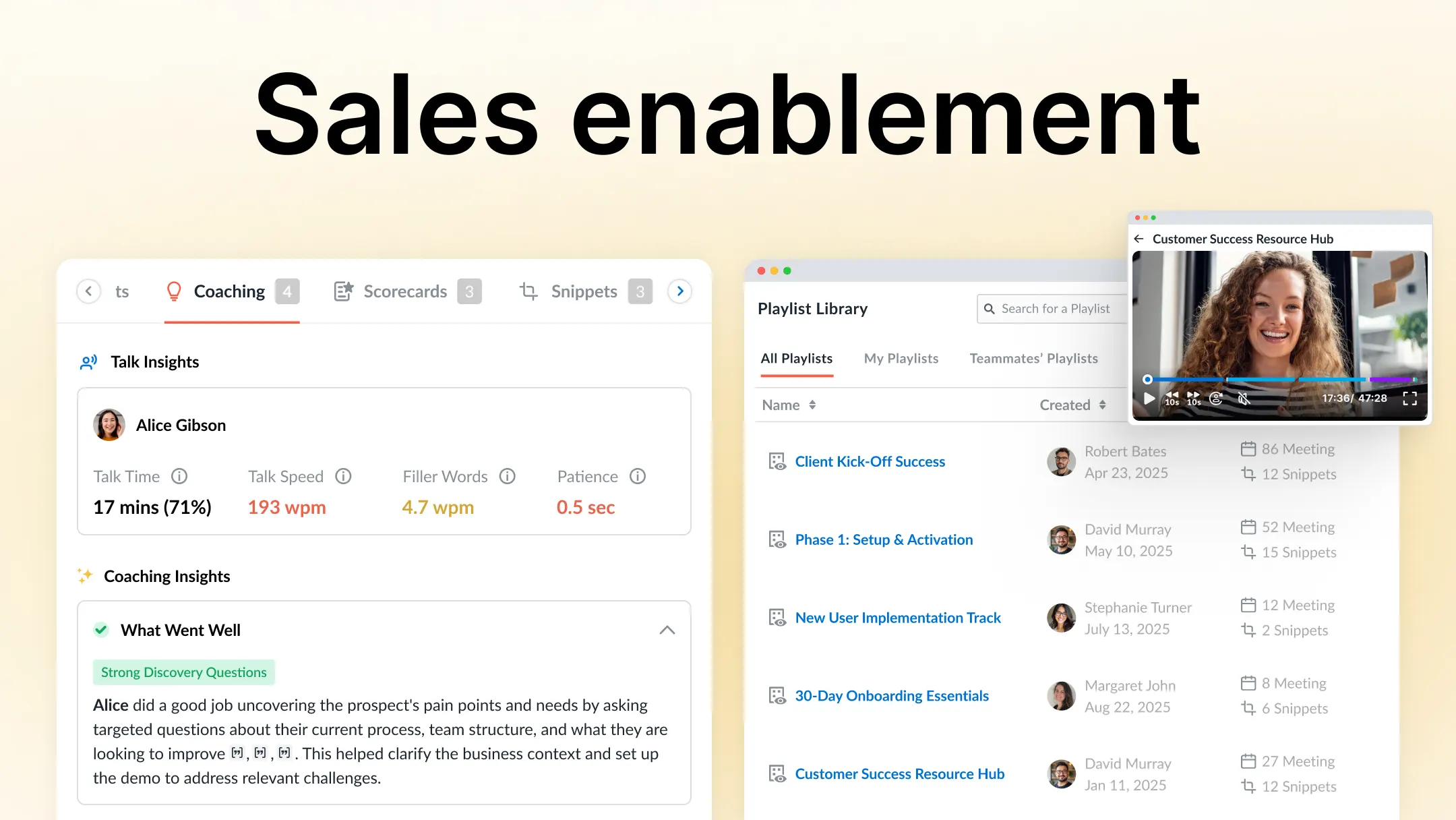How to build a customer-centric GTM motion for your SaaS?
Table of Contents:

Go-to-market (GTM) motions in SaaS circles can be a bit confusing to grasp. Seasoned founders and growth consultants casually throw around terms like sales-led, marketing-led, product-led, engineering-led, or founder-led growth, which only adds to your dilemma on what's best for your company's growth.
In the early stages of your startup, you typically pick a lane and go or are even tempted to follow what other successful founders in your space have done.
But that's like using someone else's metrics to measure your startup's success—it doesn't add up. Each startup is different, and what worked for other businesses might not work for you. For instance—despite having a product that is pretty simple for people to sign-up and start using—we at Avoma made a clear decision not to rely entirely on product-led growth for various reasons.

GTM motions for most organizations are horses for the courses. The best way to land on your ideal growth framework is to develop an organization-wide understanding of what's the best possible experience for your customer while not losing sight of your north-star. In other words—by being truly customer-centric.
What does being ‘customer-centric’ truly mean?
Most customer journey mapping happens only from the perspective of business goals. For instance, a customer journey is called 'complete' based on a customer going through a specific motion desired by the business.
On the contrary—your product, marketing, sales, and customer success can deliver a lot better if the goals and journey mapping can be based on what's valuable for the customer, i.e., what the customer is trying to achieve at each stage.
CBS Insights did research that found that 70% of startups fail within the first 20 months of their inception. 5 out of the top 10 reasons behind their failure had something to do with not meeting the customers' expectations—like failing to listen to the customers' demands or not having a market need for a product at all. In other words, failed startups often lack a customer-centric approach to building a product.
Therefore a customer-centric organization sets up its KPIs (both customer-facing and internal) based on what's valuable to the customers across the business lifecycle (customer acquisition, engagement, retention, and expansion). And it also means your best first customer influences your GTM motion (be it product-led, sales-led, or marketing-led).
Ultimately, it boils down to building a product that provides an amazing user experience which eventually loops back to building a customer-centric product. Creating a sales process that puts your customers at the forefront is, of course, a customer-centric sales process.
Building a customer centric growth motion
Customer-centric growth doesn’t mean that you don't incorporate the product-led growth motion or the sales-led motion, it just means that your motion starts from and orbits around what’s best for your customers.
Below are five ways to develop a customer-centric growth motion that can help you yield sustainable business advantages.
1. Gather customer feedback regularly
Regularly talking to your customers gives your business rich insights for you to tap into and develop a customer-centric outlook. Not taking the time to listen to customers puts you on the back foot and makes you operate on assumptions.
There are several touch points across functions to collect customer feedback. Let's look at a couple of examples.
Customer success check-ins
For example, your customer success check-in calls can be a great source to understand what your customers appreciate and what they don't. Regular check-ins with your customers are critical in helping your business deepen your customer relationships, align better to the workflow and goals of your customer, and identify potential growth opportunities.
It makes a lot of sense to have a template of things you want to cover as part of the check-in conversation, such as:
- Use case (how a customer is using your product)
- Feedback (their experience with your product)
- Pain point (any issues they might have)
- Positives (what they love about your product)
- Action items from the conversation
User research
Similarly, having dedicated people focused on user research as part of your product can help you build customer-centric products. It allows you to build a deeper understanding of your users' needs, motivations, how they are using your product, or how they expect to use it. It's also about gathering customer data on how they respond to the product's UI (user interface), UX (user experience), or other vital touchpoints.

However, the idea of customer feedback is not limited to check-ins and user research. To refine your product roadmap and account management strategy, you can glean insights gathered from sales calls, demos, onboarding, and stakeholder meetings.
2. Democratize customer insights
By nature, most business teams work in silos—and startups are not an exception to that. But it's a huge loss when the intelligence from customer-facing conversations doesn't get democratized across the organization. You can't build a customer-centric organization if some teams get left behind in understanding the customers from up close.
It would be best if you have systems and processes to democratize customer insights across the board. That means having seamless workflows that improve cross functional collaboration and facilitate the analysis of customer data.
That's where a conversation intelligence platform helps. It not only records and transcribes customer conversations across all interaction points but makes it a one-pager bulleted summary; in a way, it's simple for all teams to retrieve actionable insights from those conversations.

A few years ago, Adobe Systems put this technique into practice and saw a significant difference in their workplace collaboration. They made customer insights from their sales and marketing departments accessible for all employees and encouraged other teams to leverage valuable intelligence.
They even set up 'listening stations' at offices and online portals to listen to customer calls at their own pace. In addition, Adobe leaders shared updates about the company's customer experience delivery during their company all-hands meetings to keep everyone on the same page.
Democratizing customer insights helps your business build its customer-centric core where each team is equally involved and aware of customer needs.
3. Create a direct feedback loop with customers
Gathering customer feedback and sharing insights across the team is excellent—but it's useless if you don't act on it. Except for a few teams like sales and customer success, most businesses don't have a way for their employees to interact with their customers directly.
According to a PwC finding, only 38% of the customers say that the employees they interact with completely understand their needs. Interacting directly with your customers is an opportunity that your business can use to its advantage.
Take Airbnb, for example. The company encourages its employees to organically mix with its customers—hosts and property owners—whenever they are traveling on-site for business. And it works both ways—the company invites the property hosts to mingle with its employees when they come to Airbnb offices to attend annual meetings or other events.
It is much easier to do this online in today's remote world. For instance, your business can set up customer advisory boards, encourage all employees to take support calls, participate in focus group interviews, and lead customer ride-alongs as much as possible to get unfiltered inputs from the customers.
Every employee contributes to customer experience in one way or another—and helping them create a direct 1:1 feedback loop with customers will add depth to their understanding of customer problems.
The customer-facing teams have it easy because direct interaction is something they already have as part of their job profile. But for other teams like product and engineering, a regular rendezvous with customers can help them deepen their understanding of what customers want and create customer-centric solutions.
4. Build empathy, but tie it with business outcomes
Empathy without tangible business outcomes is just a buzzword. In business, empathy is all about understanding the customers' context so that you can help them in a meaningful way. Sometimes it can even mean saying "no" to a customer if you realize that it's not the best fit.
You can build a culture of empathy across your organization by tying it to actual business outcomes. For instance, it can directly result in better sales discovery conversations.
Providing an excellent customer experience is central to building an empathetic brand. Stats show that 73% of customers are likely to be loyal to the brands that offer them a memorable customer experience. And we already know the consequences of what happens when customers experience a subpar brand interaction.
To that end, use surveys like Customer Satisfaction (CSAT) and Net Promoter Score (NPS) to measure the level of empathy in your service. Harvard Business Reviews calls this "operationalizing customer empathy" and cites Slack as a brand doing it well.
And here's why—look at Slack's message on the App store when there was no new update on the product front:

It all boils down to creating memorable experiences. Slack is operationalizing empathy at its workplace—but it's leveraging data to make empathy a business responsibility instead of making it mere lip service.
5. Embrace collaborative selling
One might assume that being customer-centric frees a business from the pressure of generating demand—but that's far from reality. When customers stop buying from your brand, it means all the things you do are no longer relevant. Therefore, it's only logical for you to be more mindful of your sales process and ensure that it circles the customers.
Collaborative selling offers an excellent opportunity for companies to build a customer-centric growth culture and improve their profitability. Collaborative selling goes beyond the traditional norms of limiting sales to the sales team. Instead, it's a process of working with collaborators on both sides of the fence—the buyer and the seller—to identify the optimal solution for the customers.
Typically, there are multiple touch points and collaborative iterations among teams, prospects, and potential partners—because collaborative selling can't happen without the active involvement of customers.

Collaborative selling disrupts the way we did sales because the traditional way of selling viewed customers as a subject to apply your sales techniques. That old-school sales technique doesn't work anymore because most B2B buyers these days come to the negotiation table more prepared than ever.
This dramatic shift in customer behavior is changing sales from suave solicitors to facilitators of helpful information—like a consultant or an advisor. On the other hand, collaborative selling insists that the sales work closely with other teams, including the customers, on a partner level to make the whole process inclusive. Ultimately, a close alignment between sales, marketing, customer success, product, engineering, and customers helps you increase sales volume and accelerate deal closure.
Final thoughts
Building a customer-centric GTM motion is easy when starting because startups are agile in their operations than more mature businesses. And leveraging it is even easier when you have all the fundamentals in the right place.
But that said, customer-centricity is at the heart of businesses of any size—so you need to be proactive and offer the best possible customer experience to stay competitive. We hope the 5 points discussed above serve as a blueprint to scale your organization profitably.
Frequently Asked Questions






What's stopping you from turning every conversation into actionable insights?









